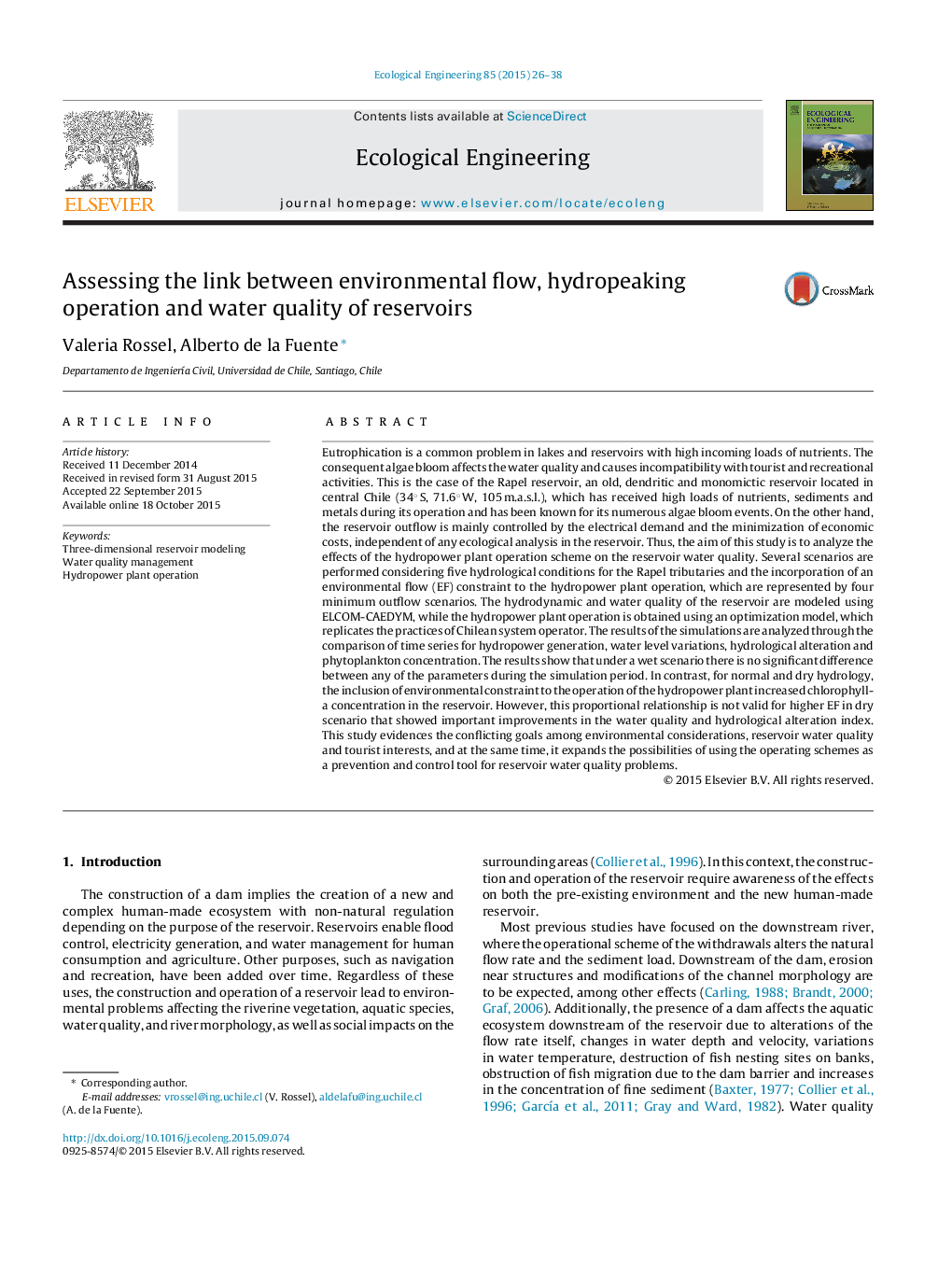| Article ID | Journal | Published Year | Pages | File Type |
|---|---|---|---|---|
| 6301582 | Ecological Engineering | 2015 | 13 Pages |
Eutrophication is a common problem in lakes and reservoirs with high incoming loads of nutrients. The consequent algae bloom affects the water quality and causes incompatibility with tourist and recreational activities. This is the case of the Rapel reservoir, an old, dendritic and monomictic reservoir located in central Chile (34° S, 71.6° W, 105 m.a.s.l.), which has received high loads of nutrients, sediments and metals during its operation and has been known for its numerous algae bloom events. On the other hand, the reservoir outflow is mainly controlled by the electrical demand and the minimization of economic costs, independent of any ecological analysis in the reservoir. Thus, the aim of this study is to analyze the effects of the hydropower plant operation scheme on the reservoir water quality. Several scenarios are performed considering five hydrological conditions for the Rapel tributaries and the incorporation of an environmental flow (EF) constraint to the hydropower plant operation, which are represented by four minimum outflow scenarios. The hydrodynamic and water quality of the reservoir are modeled using ELCOM-CAEDYM, while the hydropower plant operation is obtained using an optimization model, which replicates the practices of Chilean system operator. The results of the simulations are analyzed through the comparison of time series for hydropower generation, water level variations, hydrological alteration and phytoplankton concentration. The results show that under a wet scenario there is no significant difference between any of the parameters during the simulation period. In contrast, for normal and dry hydrology, the inclusion of environmental constraint to the operation of the hydropower plant increased chlorophyll-a concentration in the reservoir. However, this proportional relationship is not valid for higher EF in dry scenario that showed important improvements in the water quality and hydrological alteration index. This study evidences the conflicting goals among environmental considerations, reservoir water quality and tourist interests, and at the same time, it expands the possibilities of using the operating schemes as a prevention and control tool for reservoir water quality problems.
